Notable: Early October 2025
Thoughts and musings on eight notable wines from Etna, Barolo, and Montepulciano
Welcome back to Notable, where twice a month I highlight thoughtful wines from recent tastings.
Below are eight wines from Italy (well, two are from Sicily; not quite the same thing), all made from native or autoctono grapes. Such wines are, by nature, uniquely expressive of territorio,1 yet despite their far-flung distribution, the three reds, at least, evince strong kinship. They are textural, structured and tannic; they grip and scrub and lift. They are savory, earthy, and black fruited, with woodsy depths. They are dark but not starless; they shine without eclipsing the table.
Speaking of the table, a word about alcohol. As I’ve written previously (most recently in my last Notable), I favor digestibility and prefer wines below 14%. Only one of the following wines—predictably, the white—hits that mark. I raised these concerns in a digital tasting with Christian Pepi, who produces three of the wines below. “Vino Nobile has a lot of tannin, structure, and ripeness,” I said. “It can be in balance at fourteen and a half or fifteen degrees. But how do you think about the growing market preference for lower alcohol, given what your territory hands you?”
“Meg, I think it’s very hard!” he said, smiling and shaking his head. “Here, it’s very hard. Also in Barolo, in Amarone, in Primitivo area, in Nero d’Avola area. It’s very hard. Maybe we’ll start to blend with some other grapes, for example Canaiolo Nero, which is lower alcohol. We could add the maximum of white grapes, five percent. But it’ll be a challenge. It’s hard to deal with global warming. The maturation of the grapes is not like years ago. Every year the wines have a little more alcohol.”
“Are you considering using clonal selections to achieve physiological ripeness at lower potential alcohol?” I asked.
“Yes, I think we have to start working with clones. We have three universities—Bologna, Firenze, and Pisa—that are doing a long project on the clones of Sangiovese. At Talosa we have eight hectares of Prugnolo Gentile, but the rest is Sangiovese from a selection from Chianti. It’s easy, but it’s standard. My Sangiovese is like any other Sangiovese! The project that we have for Montepulciano—and it will take twenty, thirty years—is to take, once again, the native grapes and replace those vineyards from the 1980s and 1990s. But we need time.”
I can wait.
First up: Two Wines from Etna
Cottanera Etna Bianco 2023
The Cottanera family farms in Castiglione di Sicilia, on the north slope of Mt. Etna. If the mountain were a giant clock, it’s at about 1:30. Francesco Cottanera arrived there in 1962, at first tending a hundred acres of hazelnuts plus grapes he sold to the cooperative. In the 1980s the family ripped out the economically marginal nut trees and planted more vines, making some wine to sell in bulk to the enoteca. In the 1990s, Francesco’s son, Guglielmo, further commercialized the operation, tinkering with Merlot, Cabernet, and Syrah to appeal to broader markets. But by the early part of this century, the team was grafting those vines back to Nerello Mascalese and Carricante (thank goodness) to slake a newfound thirst for Etna Rosso and Etna Bianco. Now the third generation, Francesco, Mariangela, and Emanuele, run the show.
The Cottanera Etna Bianco is a varietal Carricante, straw yellow with a fragrance of pear and citrus and flavors of pear nectar, nectarine, and salt. The texture is zippy and salivating but with a coating midsection. The finish is herbal-saline-savory; the Italians would call this sapidità, “sapidity,” by which they mean, essentially, salty-savory. The wine is delicious and multidimensional, delivering fruit, refreshment, crunch.
12.5% ABV | About $32; imported by Indigenous Selections
Pietradolce Etna Rosso 2023
I love, love, love Pietradolce’s wines. I first encountered them on a tour of Etna in 2017, visiting their vineyards near Solicchiata (at about 1:00 on the mountain clock) with agronomist Giuseppe Parlavecchio. In their main plot, fifteen hectares are planted as bush vines, called alberello or “little tree.”
“It’s the best system,” Parlavecchio told me. “The plants feel all around them the air, the sun. The grape is always in the center. This is the best exposure for the grape.”
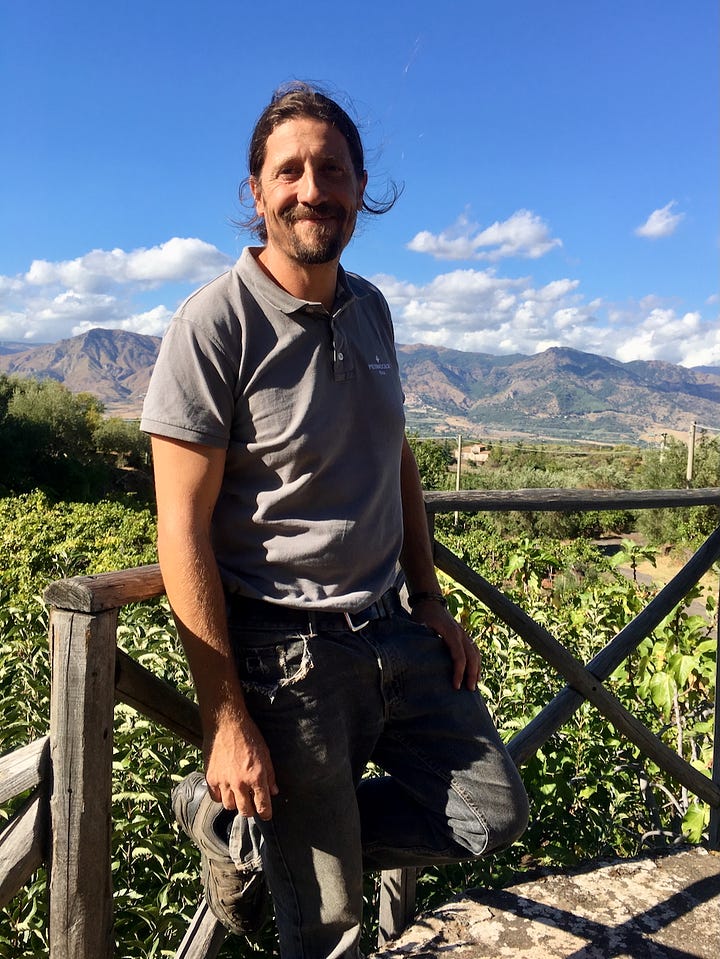
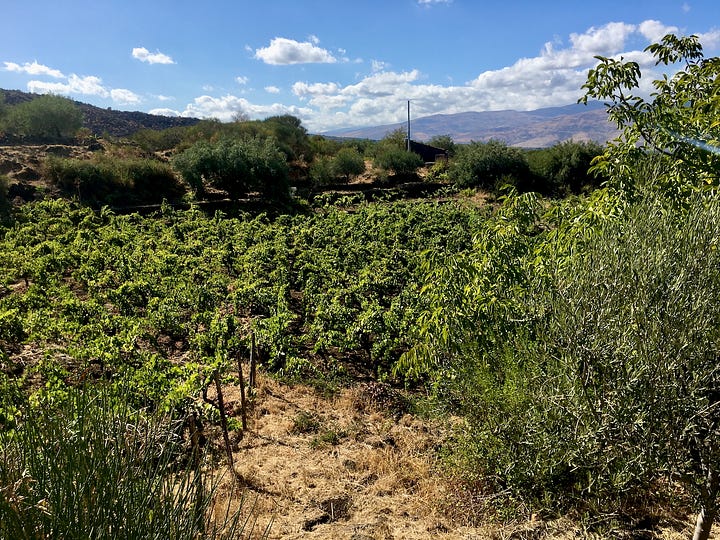
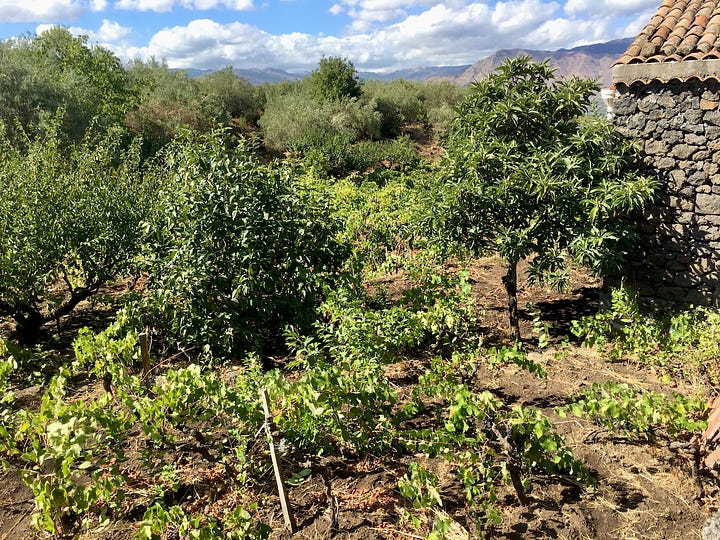
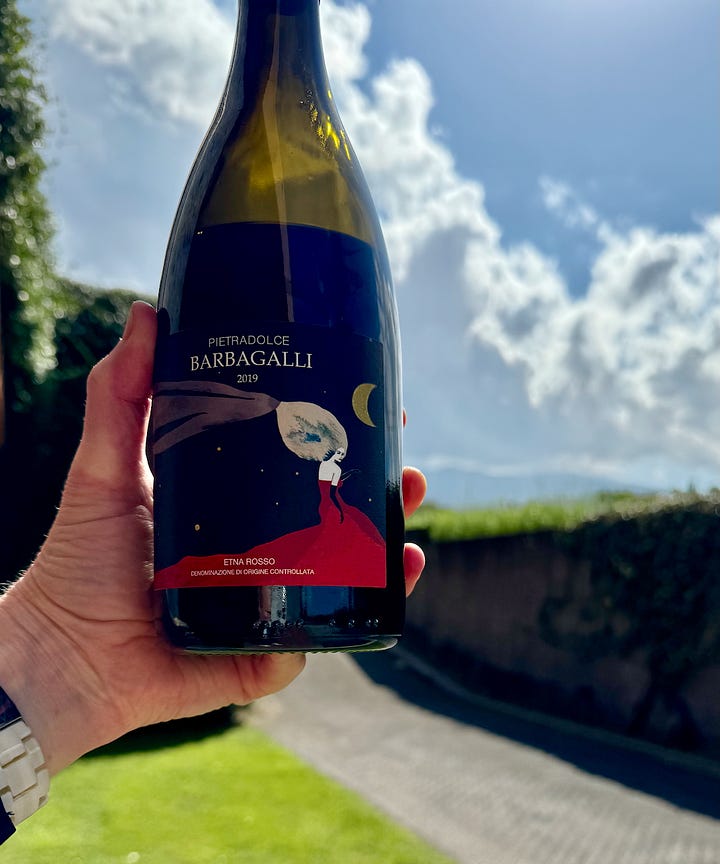
Etna delivers harsh growing conditions; “We have fifteen to twenty days per year with snow,” he said. But the mountain’s native red likes it here. “Nerello is a wild grape, a wild plant. It’s a rustic plant that survived in the summer, the heat, and the winter. It’s a strong grape, a strong variety.”
That strength saw some of Etna’s vines through phylloxera, and Pietradolce is privileged to farm an old-soul, centenarian plot in Contrada Rampante. I adore the wine they make from this site, called Barbagalli. On my repeat trips to Etna I’ve had the opportunity to re-taste it along with their other wines, which include old-vine, contrada, and standard Etna DOC wines in red, white, and pink. (View my report from my last comprehensive tasting, at Etna Days in 2024; scroll to the Tasting Notes section.)
The Pietradolce Etna Rosso is a varietal Nerello, grown in Solicchiata on the northern slopes of the volcano at 700 to 800 meters of elevation. Limpid red, it offers aromas of red fruits, violets, and fresh air. Its texture leans on acidity more than tannin, forming a delicate armature for flavors of strawberry and blood orange. I also get hints of rosemary and citrus peel at the end. It’s a clean, crystalline wine with fine details and a bracing finish. Wake up!
14.5% ABV | About $30; imported by Empson USA
Talosa Nobile di Montepulciano
An ancient cave lies beneath the main square in Montepulciano, in southeastern Tuscany. Originally excavated by the Etruscans and used to store salumi, cheese, and other foodstuffs, it was expanded in the 15th century with the help of neighboring Florentines grateful for the townspeople’s help in defeating the Sienese. Florence donated expertise and materials to construct vaulted rooms in the cave’s sandy, calcareous soils. During WWII, the corridors served as a refuge from fighting for nearly two thousand inhabitants.
Angelo Talosa bought the site in 1972, transforming it into a production facility for wines grown at Villa Talosa, two kilometers out of town. Today the cellars, at a constant 55℉ and 80% humidity, are used to age wines and host visitors. Fattoria della Talosa produces a hundred thousand bottles annually and is the process of organic conversion. Christian Pepi, who hosted that virtual tasting I mentioned in my introduction, trained in enology in Florence and is responsible for the blending.
Talosa Alboreto Nobile di Montalcino 2021
Garnet color with aromas that mix red with green: red berries, juniper berries, juniper leaf. The texture is velvety but firm and the acidity feels cleansing. The flavors recapitulate that sense of juniper- and rosemary-steeped fruits. Balanced and drinkable.
ABV 14.5% | $40 (sample)
Talosa Nobile di Montalcino Riserva 2020
The Riserva, aged a year longer, has a tawny cast and aromas of tea, wood, and dark berries. Texturally it’s smooth, with supple tannins and medium acidity. The flavors are likewise woodsy, but mostly about forest not barrel. The finish is drying, slightly astringent, lit up.
ABV 14.5% | $50 (sample)
Talosa Filai Lunghi Nobile di Montalcino 2021
This wine is made from a selection of their best grapes. It’s seamlessly knit, the acidity and tannins and fruit a tapestry of textures and flavors. There are aromas of berries, fresh air, and cedar, and the palate feels piquant: red fruits shiny with alcohol and acid and a finish like cinnamon.
ABV 15% | $60 (sample)
Talosa is imported by Wine Situation and other U.S. importers.
Josetta Saffirio
I joined another virtual tasting with Sara Vezza, winemaker and owner of Josetta Saffirio, in Monforte d’Alba. She is the fifth generation to head the estate founded by her ancestor in the early 1800s. In the 1980s, her mother, Josetta Saffirio, decided to stop selling grapes and start making wine. She enjoyed some success but soon realized it wasn’t the life for her. Sara was distraught at the prospect of losing the estate and the family’s agricultural lifestyle, so despite her youth and lack of training, she asked her parents for permission to take over. “I’m a determined person and I like hard work,” she said. She was twenty-two when she produced her first harvest, just one thousand bottles.
Over time Sara built a new cellar while converting production from conventional to organic. “I couldn’t suffer the chemicals in the vineyard,” she said. “It was a personal need. To be organic is a choice you do for yourself, because you want to live in a healthy place.” She embraced an ecological philosophy, replanting sixteen hectares of forest with truffle trees and tenderly husbanding surrounding fields to support a finicky native orchid. Most recently she has abandoned formal organic certification because she felt it didn’t go far enough; it was more about bureaucracy than biodiversity.
In 2023 the company partnered with Renzo Rosso, an Italian fashion mogul and wine-curious investor (he also finances Benanti, on Mt. Etna). The flood of cash is helping her renovate her cellar, acquire more vineyards, and refresh the brand. “I’m very happy to have this opportunity and this partner,” she said, “because they left the governance to me. It’s good for both sides.”
Josetta Saffirio Monforte d’Alba Barolo 2020
This bottling is the anchor of their production. The grapes have ten to twenty days of skin contact and the wine goes through malolactic in stainless, then ages two years in oak casks. The 2020 vintage was warm. The wine shows aromas of black tea, blackberries, and forest, and the tannins are smooth and even. Overall the wine feels youthful, approachable, easy to like.
14.5% ABV | $50 (sample)
Josetta Saffirio Millenovecento48 Castelletto Riserva Barolo 2017
The fruit for this bottling, made only in exceptional years, derives from a vineyard planted by Sara’s grandfather after the war, in 1948 (hence its name; millenovecento48 means nineteenhundred48). “I’m very bonded to this vineyard because it’s the beginning of everything for our family,” Sara said. The wine stays longer on the skins, thirty to forty days, and after pressing ages in Slavonian oak. Vintage 2017 was warm like 2020, and Sara feels the wine balances structure with elegance. The color is holding steady, only faintly tinted with age, and the fragrance suggests cherries and tea. The flavors are leathery and brambly, and the finish lightens up while the tannins dry down. The whole thing ends up feeling almost weightless, sylphlike, sleek.
14.5% ABV | $160 (sample)
Josetta Saffirio is imported by Metropolis and other U.S. importers.
All photos ©2025 Meg Maker. I’m grateful to AB Comunicazione for coordinating my virtual tastings with Cristian Pepi Talosa and Sara Vezza.
Most Italians use the French word, terroir, but in this context I prefer the word in their accent.



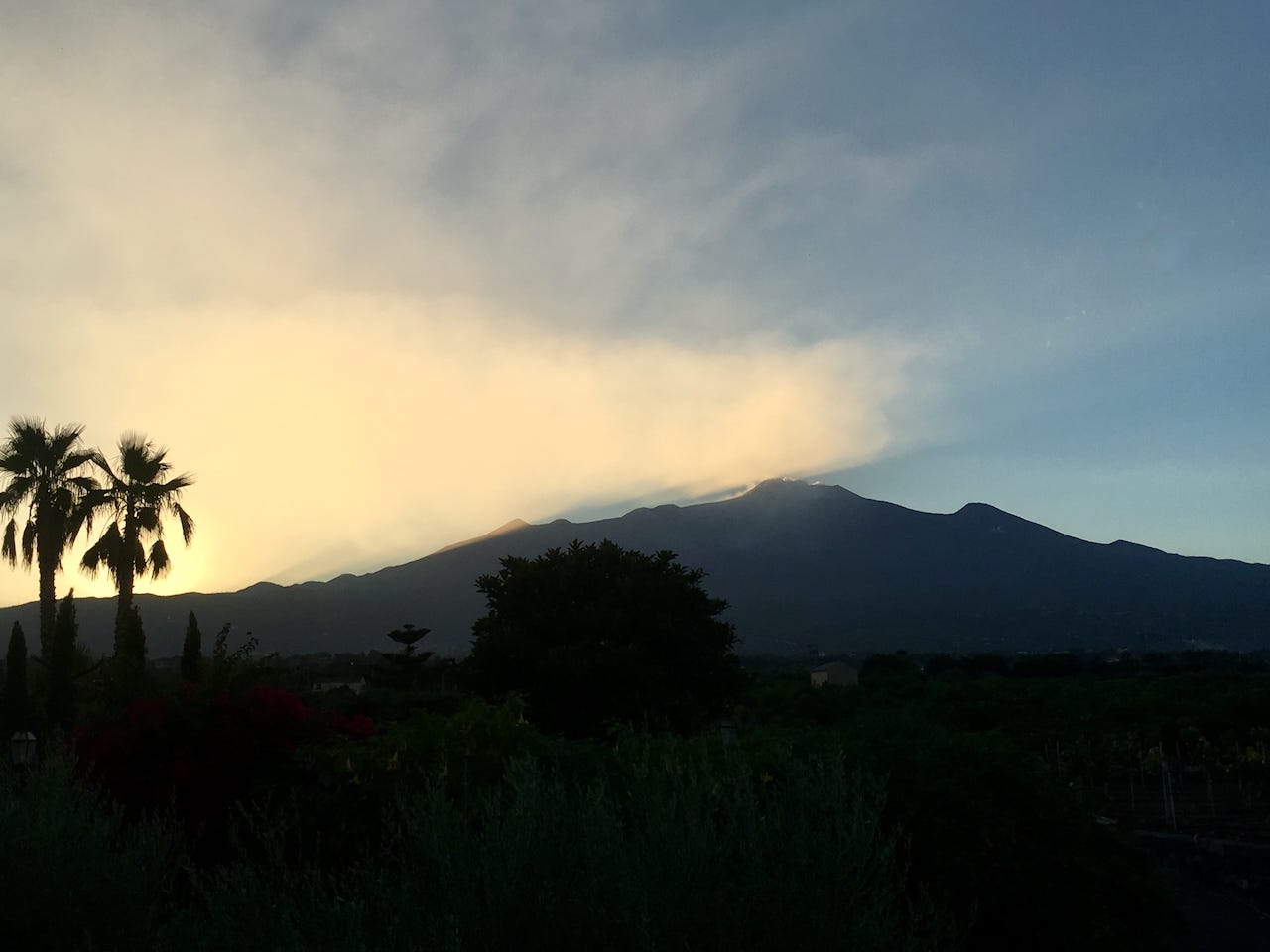
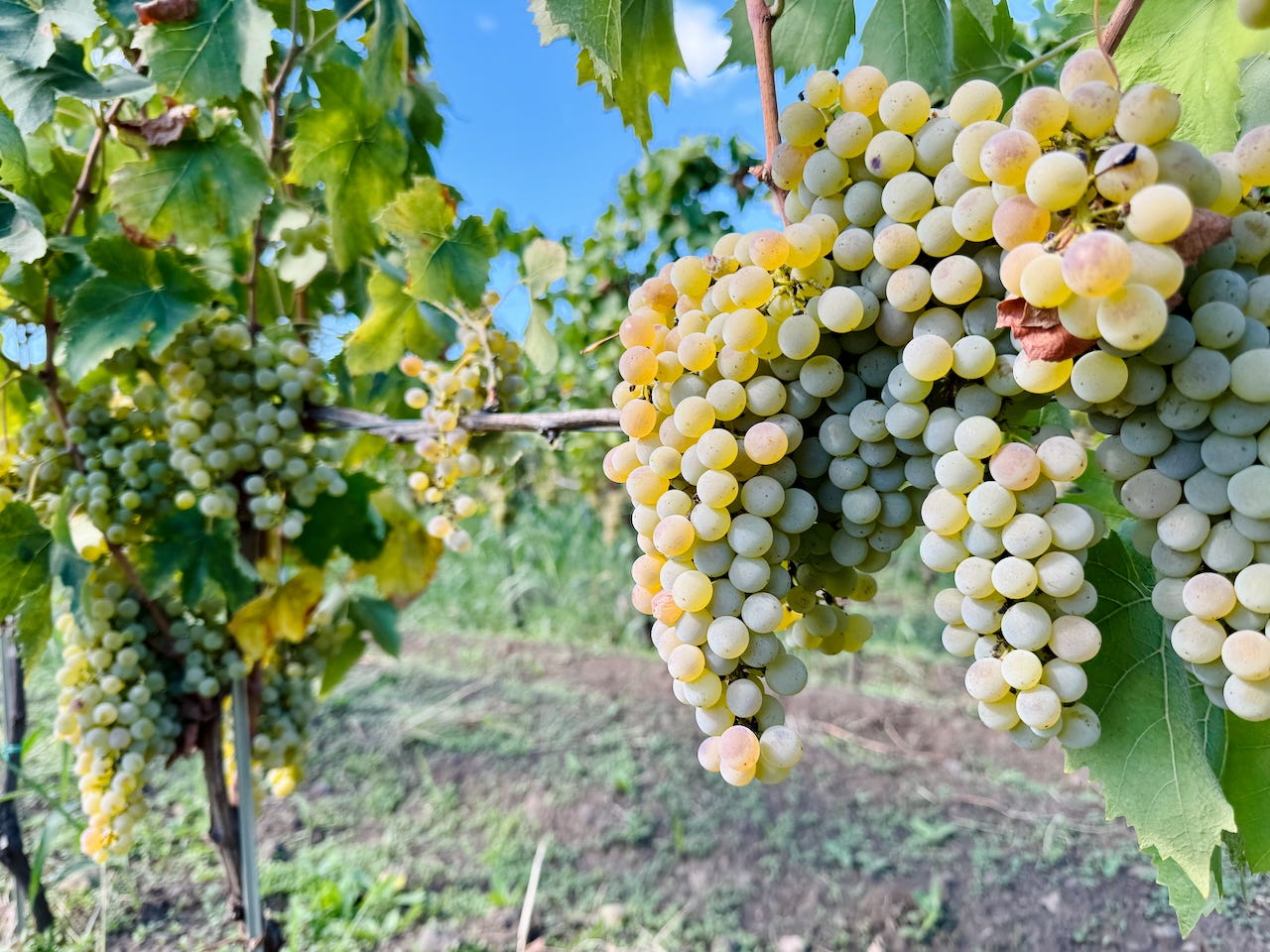
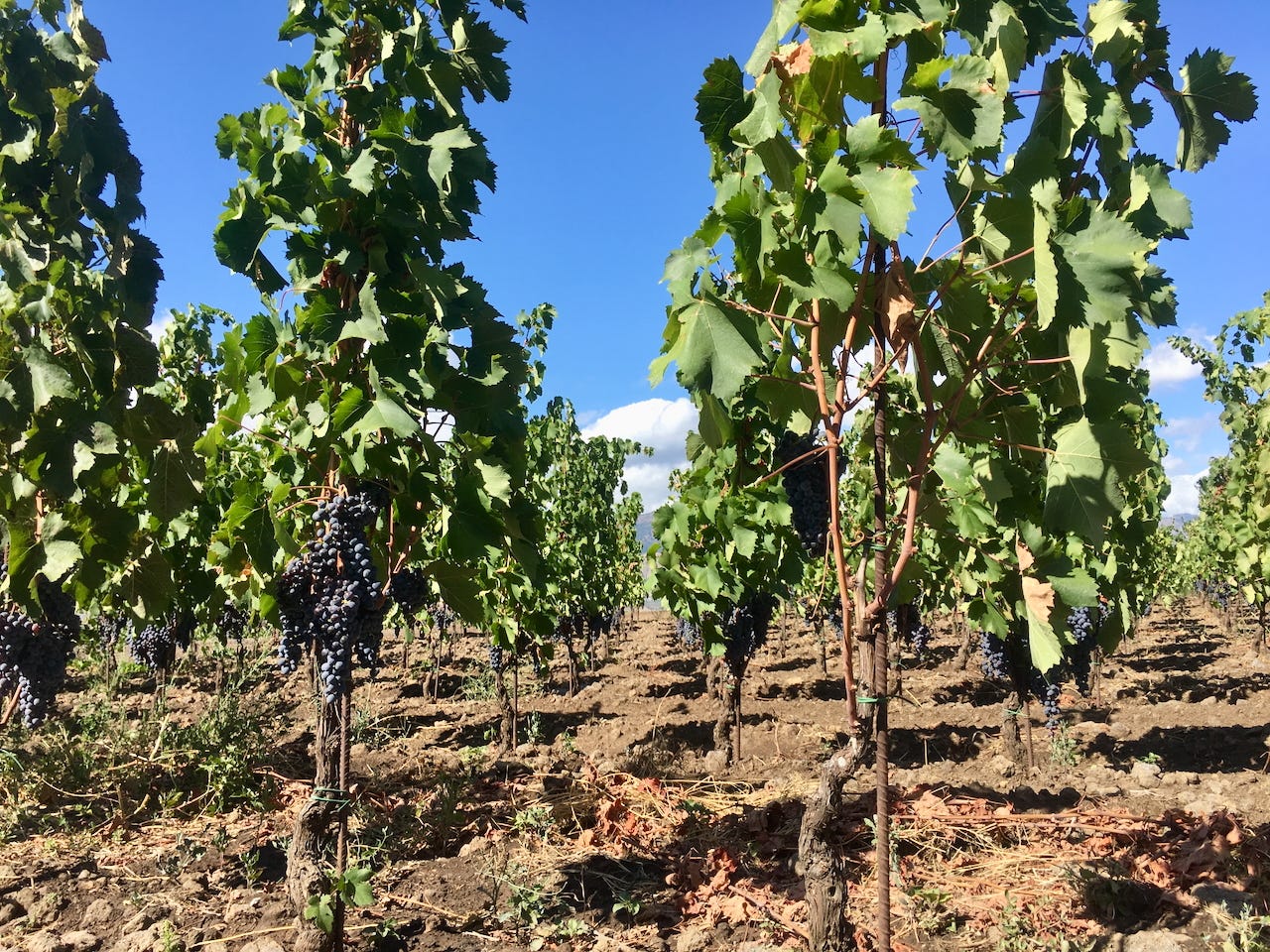
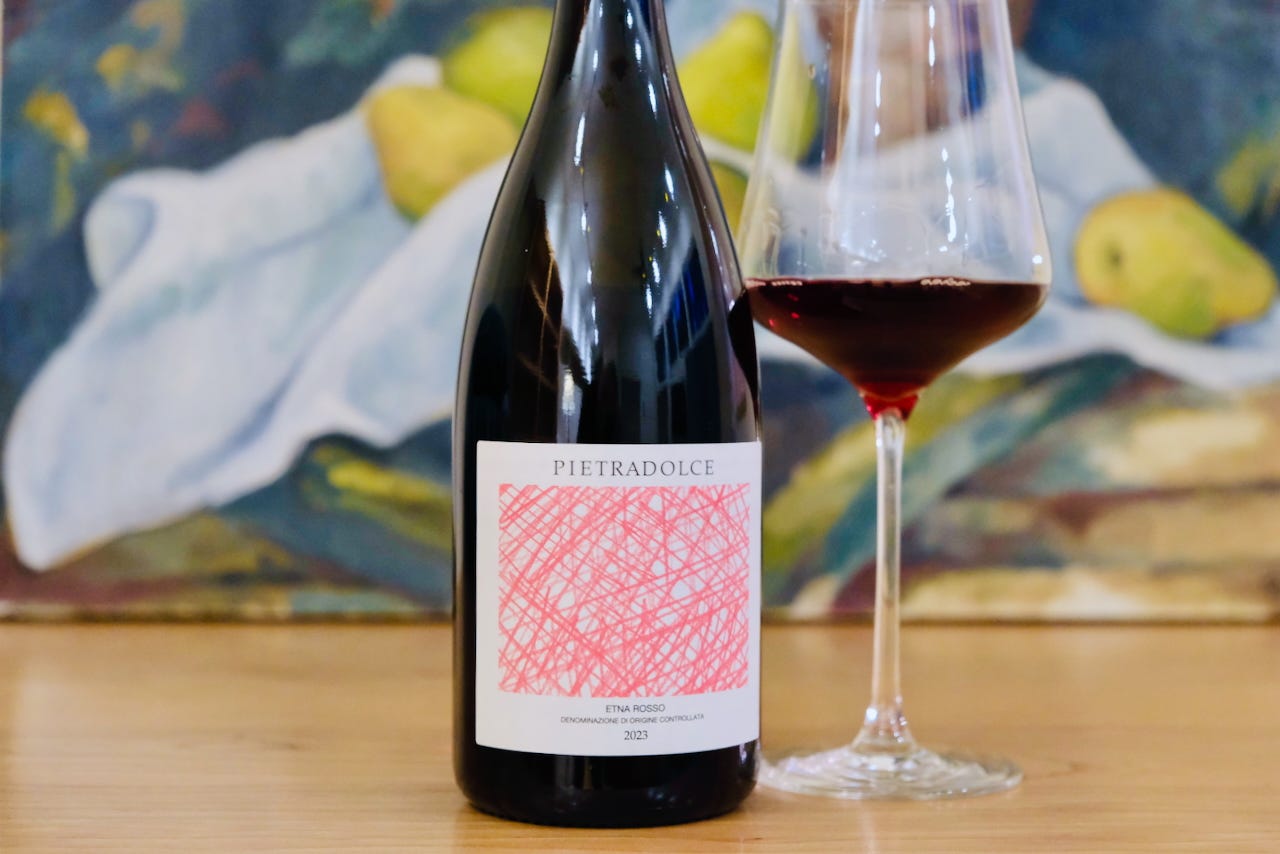
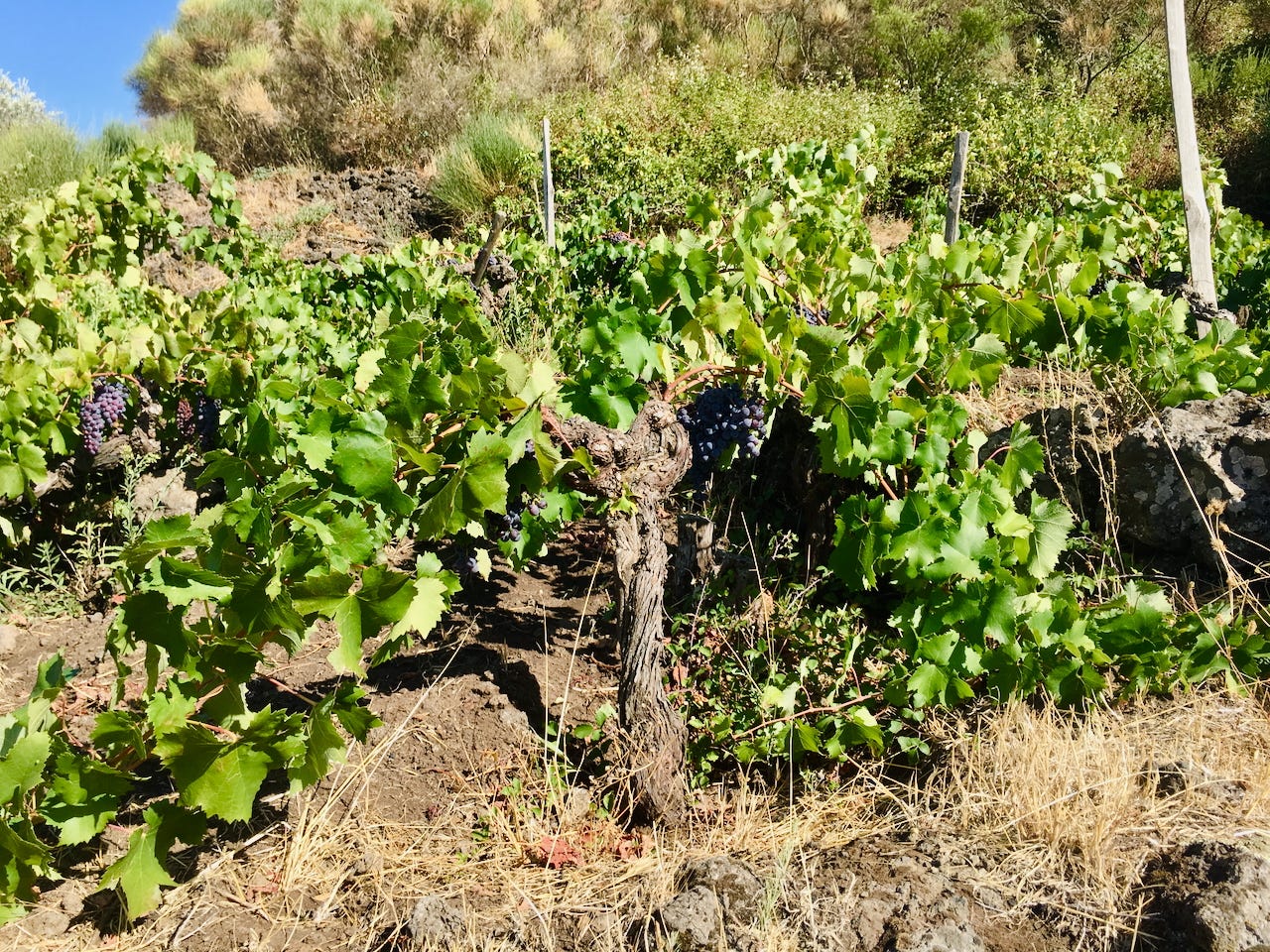

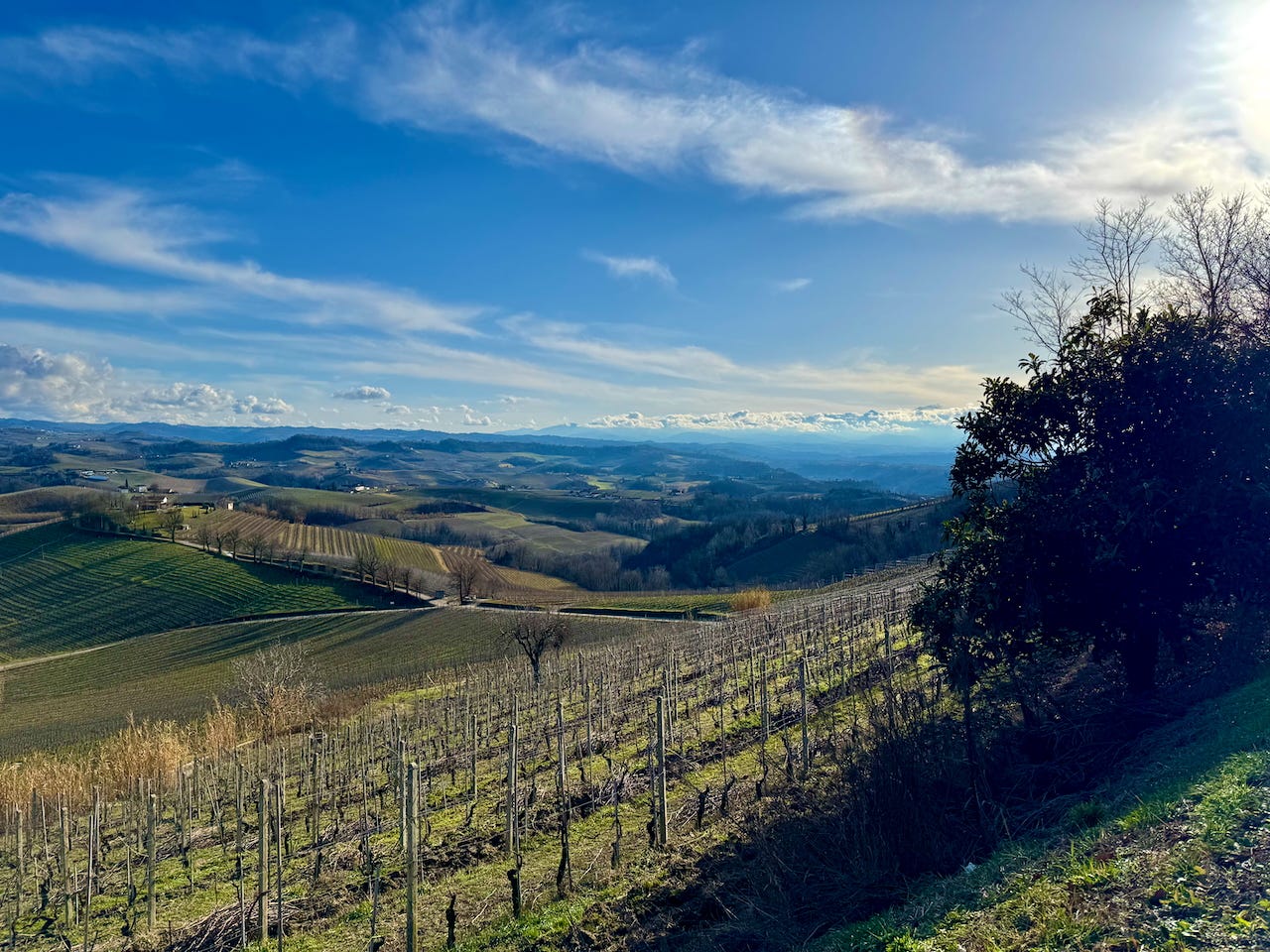
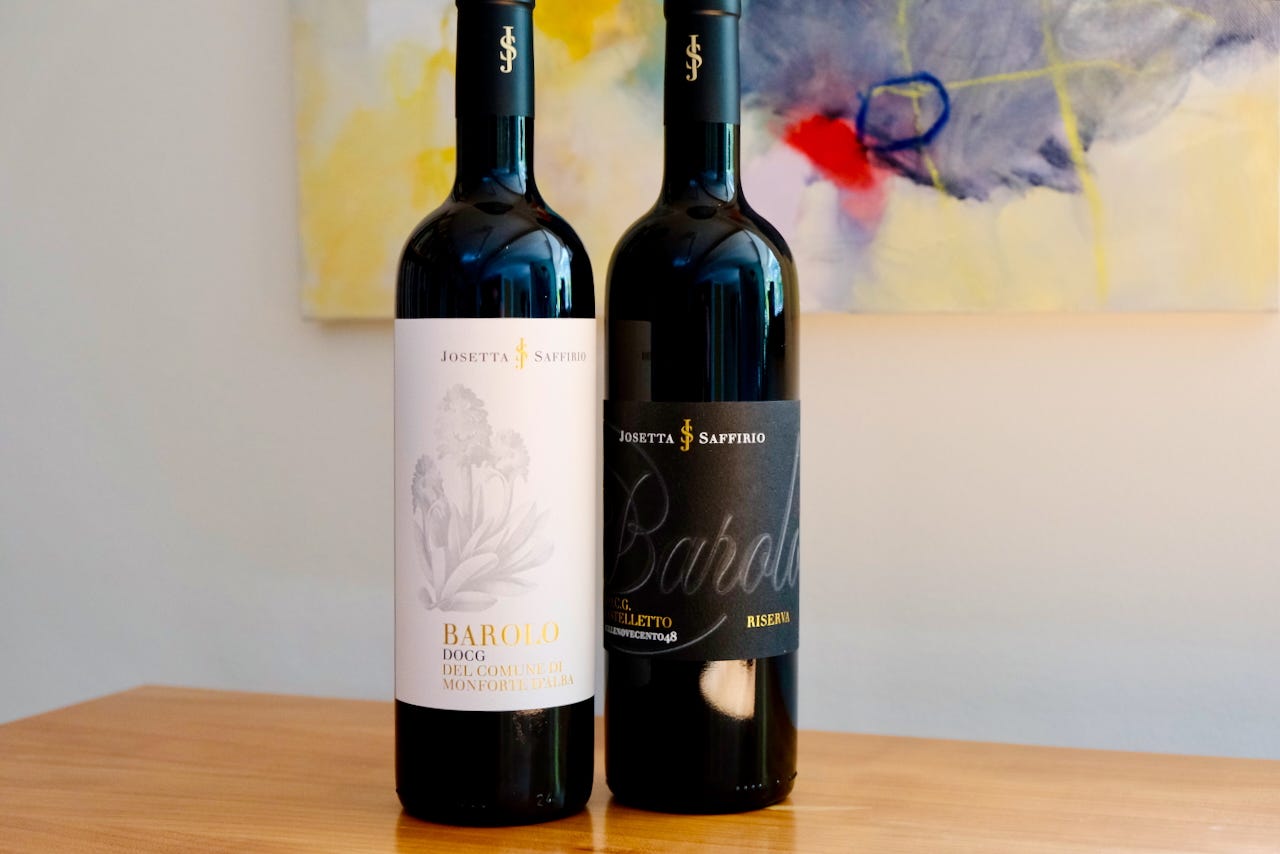
I don't know if other people have experienced this but I find rootstock makes a huge difference.
When we had our place in the Languedoc, I planted Grenache on 3309 on the opposite side of a track from an existing parcel of Grenache on Ru140. Once our vines had about 5 years age we noticed that the grapes were significantly more aromatic at 12.8% potential alcohol than the vines on 140. We could harvest 2 weeks earlier with 2-3% less alcohol and the young vines made significantly more aromatic wine.
Doing an early pick of Red for Rose then adding that wine back is another way to lower the alc and add back acid. I've done several trials domestically blending in white wines to tamp down the alcohol on some reds. Both methods can work, but there's plenty of trial and error with the white wine component.